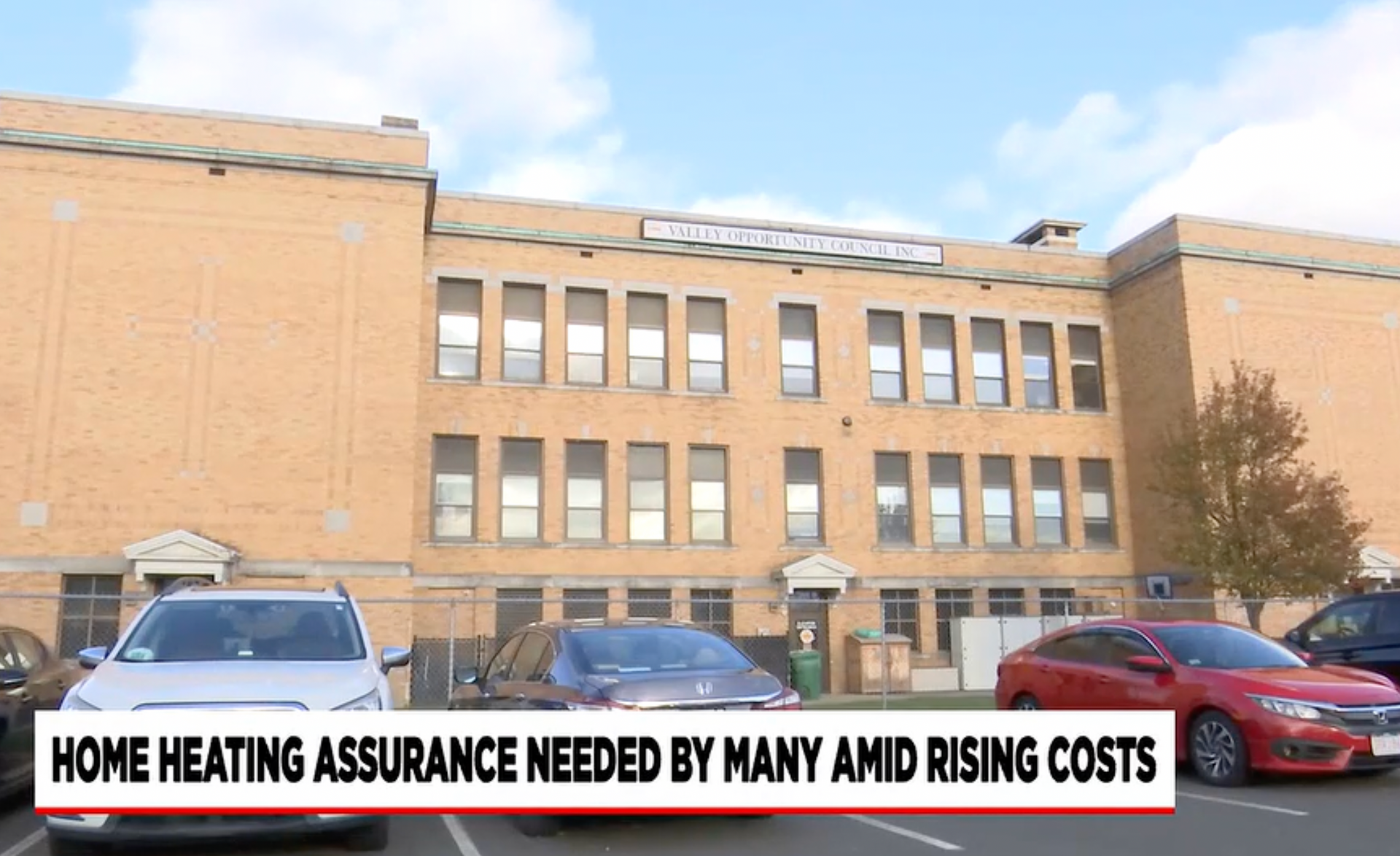Featured in The Republican / MassLive: Bracing for Winter; Municipal utilities work to keep high energy costs at bay

By Jim Kinney | jkinney@repub.com
WESTFIELD — One morning last week Westfield Gas & Electric bought 30,000 dekatherms of natural gas for its customers to use in the cold of January and February, The price was $5 a dekatherm, said Thomas P. Flaherty, the municipal utility’s general manager. Minutes after the purchase, news hit the market of then-Hurricane Ian taking aim at Florida’s Gulf Coast and threatening the petroleum industry. The price shot up 50 cents. Just a few minutes saved Westfield Gas & Electric and its customers $15,000. And that’s just one transaction for a tiny sliver of the 1.5 million to 2 million dekatherms of natural gas Westfield Gas & Electric will buy in a year, Flaherty said.
“We are not managing our business like that, trying to play the short-term market,” Flaherty said. “We are trying to manage our budget. Every day we are making the best choices for providing reliable and affordable energy to our customers here in Westfield.”
Flaherty is among those who deal in energy daily, and he’s become used to seeing dollar-wide swings in the energy markets. Fifteen or 20 years ago, a 10-cent or 20-cent jump was a big deal.
“It would have put some panic in,” he said. “There are so many variables, think Europe, Ukraine and (Russian President Vladimir) Putin,” he said.
What’s more, natural gas prices are driving up the cost of electricity.
“If all the liquified natural gas is going to Europe at $100, it is not going to come here for $50,” Flaherty said. “It’s a capitalist market.”
Cheap natural gas and environmental regulations pushed out other forms of power generation in New England. But now with Europe calling for American natural gas and pipeline bottlenecks, the region’s bracing for price increases.
Ten days ago, Judy Chang, the Bay State’s undersecretary of energy and climate solutions in the Executive Office of Energy and Environmental Affairs, warned, “This winter will be, at best, a very high-cost energy winter,” adding that the Baker administration has “been working with our federal partners in developing a plan for New England’s winter.”
“So everybody should conserve. Everybody who has close friends, please tell them conserve,” Change said. “I think it’s useful for everyone to be aware of that, and spread the word for conservation as much as possible.”
National Grid announced many of its 1.3 million electric customers in Massachusetts are going to get eye-popping bills when winter rolls around thanks to the price of natural gas being “significantly higher this winter due to global conflict, inflation and high demand.”
National Grid warned that the monthly bill of a typical residential electric customer using 600 kWh will increase from $179 in the winter 2021-2022 season, to approximately $293 for the winter 2022-2023 season, or a 64% increase, Likewise, Eversource was urging its customers take efforts to conserve. If its proposal to the state Department of Public Utilities for rates to take effect on Nov. 1 is approved, “an average residential customer in the former NSTAR Gas service territory using 126 therms of gas per month will see an increase of roughly 38% or $86 on their natural gas bill per month over last winter. An average residential customer in the former Columbia Gas service territory using 132 therms of gas per month will see an increase of approximately 25% or $61 on their natural gas bill per month over last winter.”
Municipal utilities in Western Massachusetts, like Westfield and Holyoke, say their customers, too, will not be immune to rising costs.
“WG+E customers may see their winter gas bills increase about 32% from the 2021-2022 heating season. With the winter rates which are starting in October, the average residential customer’s January bill will be about $70 higher than last January,” said Keziah Bednarsky, senior quantitative risk analyst for Westfield Gas & Electric. “Electric rates will increase about 15%, which is nearly a $20 increase per month for the typical household. WG &E’s rates for the year are expected to remain below the state average.”
Holyoke Gas & Electric is looking at a 10% increase in electric rates and a 39% to 40% increase in natural gas, said James Lavelle, HG&E’s general manager.
At Chicopee Electric Light, general manager James Lisowski said power rates went up 15% to 20% over the past year and he anticipates another 15 to 20% increase in 2023.
Lisowski said municipalities have more flexibility to buy ahead as a hedge.
“We can have investments in plants, we can have long term contracts,” he said. “We have things in place that can shelter us from some of the extremes in the market.”
Justin Connell, director of energy markets for Ludlow-based Massachusetts Municipal Wholesale Electric Co., said the cooperative has generating capacity for its member and participating utilities, including the Stony Brook Energy Center in Ludlow and the the Seabrook and Millstone nuclear plants.
“We basically, in a somewhat disciplined way, time the market and build a portfolio,” he said.
And Stony Brook is valuable because it is dual fuel, running on natural gas or ultra low sulfur diesel. It also turns on quickly, allowing grid operator ISO New England to rely on it for fast power, Connell said.
“So when the grid needs the megawatts, we are available to provide those,” he said.
Connell said it’s not just the war in Ukraine that’s spawned the rising costs. Energy prices started rising two years ago, as the economy began emerging from COVID-19.
For Holyoke Gas & Electric, energy diversity means hydropower, said Lavelle. It’s the same energy that built the Paper City as an industrial powerhouse in the 19th century.
In an average year, two-thirds of Holyoke’s electricity comes from its own hydroelectric.
“Over half the electricity in New England is generated by natural gas,” he said. “Our market exposure is much less because of the assets that we have.”
But, Lavelle noted, this summer was the driest year since Holyoke Gas & Electric’s records started in 1958 and generation was down. Fortunately, September’s rains brought more water.
Lavelle said Holyke’s energy storage — battery storage at the Mount Tom solar station which replaced a coal plant and the Martin J. Dunn Energy Center — allow it to store energy at times of low need and release it for use when demand is high.
Utilities are not the only ones planning ahead. Michael V. Behn, president and chief operating officer of the Greenfield-headquartered Sandri Companies, said customers are buying home heating oil contracts ahead of winter.
“It’s fairly expensive compared to previous years,” he said. “People are buying it and buying it heavily much to my surprise. Heating oil has been dropping a bit on the wholesale market, and supply looks to be good for us to get through the winter.”
He also reported brisk business in wood pellets, with customers buying wood-pellet burners or dusting off ones they quit using when oil prices fell.
Sandri is also busy installing furnaces that can burn waste engine oil. Dealerships and repair garages are once again looking to waste oil as a heat source, Behn noted.
People worried about home heating costs are also rushing to sign up for LIHEAP, the Low Income Home Energy Assistance Program. Stephen Huntley, executive director of Valley Opportunity Council, said his agency, the only one responsible for handling applications for all of Hampden County, has already certified 2,000 homes for assistance.
“We are double where we were a year ago at this time,” Huntley said. “We expect to to be such a difficult year, such a busy year for the program.”
That 2,000 households is a lot to have signed up by the first week of October, but only a tenth of the 20,000 households Huntley expects to sign up by the end of winter.
He’s hired 17 additional workers for the winter, five of those represent an increase once Valley Opportunity Council’s takeover of LIHEAP work once performed by the New England Farm Workers is factored in.
New England governors asked Congress to support at least $500 million in emergency funds to help address the forecasted spike in home energy bills, a request Massachusetts Gov. Charlie Baker reiterated on a visit to Barnes Air National Guard Base Tuesday.
The bill passed to President Joe Biden’s desk on Friday with an estimated $36.9 million in additional funding for Massachusetts residents, according to U.S. Rep. Richard E. Neal, D-Springfield.
Neal, chairman of the House Committee on Ways & Means explained that the LIHEAP program was championed in its early days by the late U.S. Rep. Silvio O. Conte, R-Pittsfield.
The Springfield congressman said it is clear that the unrest in world markets is now being driven by the Russian invasion of Ukraine. The job is to stand up to the aggression in Ukraine while at the same time making sure that vulnerable people here at home have heat this winter.
In Westfield, Flaherty said he’s already getting phone calls from churches and civic organizations both offering to help people pay utility bills and inquiring about the help available for members.
“It’s not too late to get a home energy audit,” he said.





